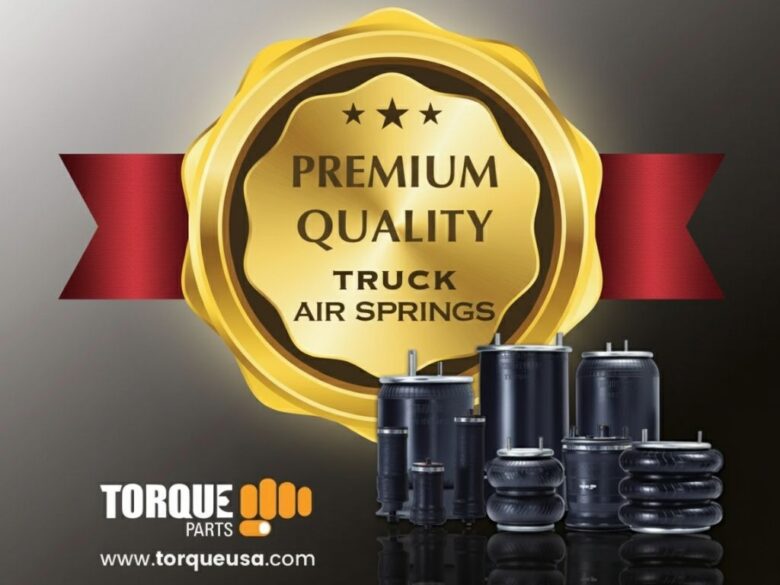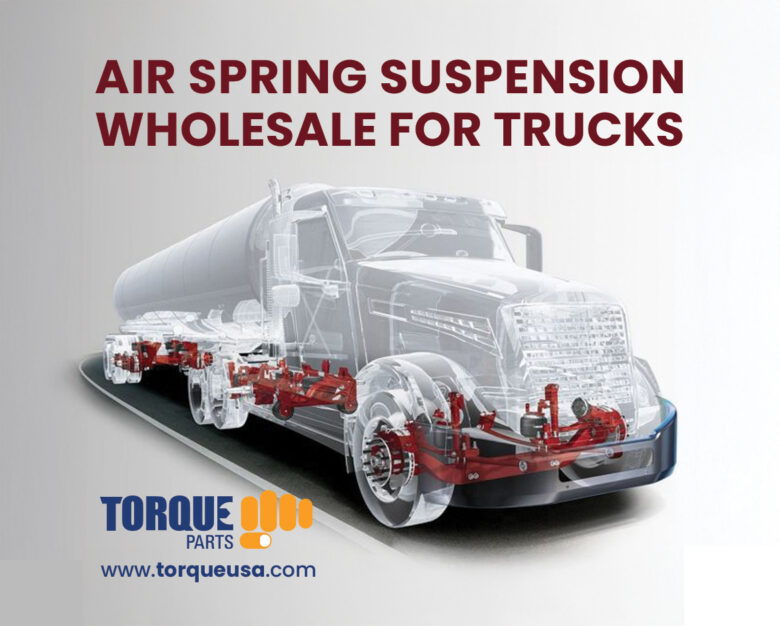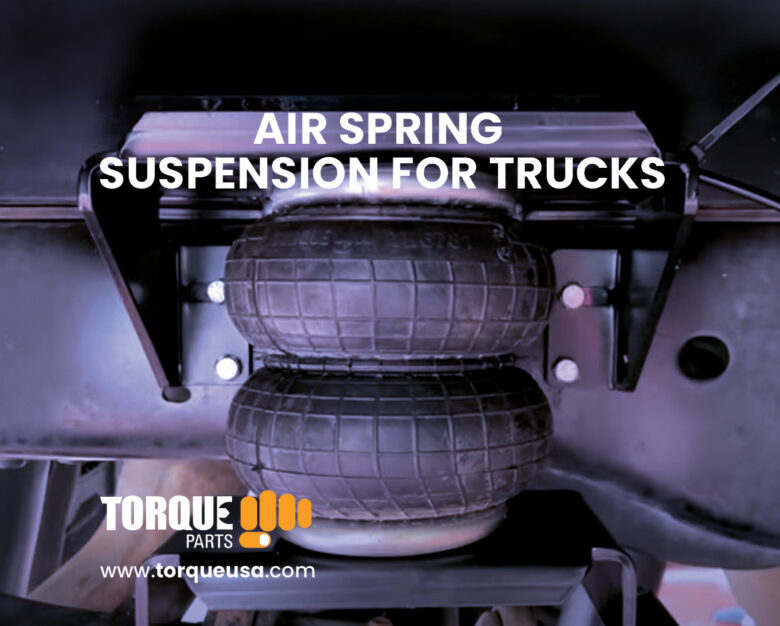Heavy-duty trucks depend on reliable suspension systems to maintain safe operations, protect cargo, and ensure driver comfort. When air spring failure occurs, it can compromise vehicle performance, safety, and operational efficiency. Understanding the warning signs and knowing how to respond can prevent costly downtime and extend the lifespan of your fleet’s suspension components.
What Are the Primary Symptoms of Air Spring Failure?
Air spring problems typically manifest through visible ride height changes, with vehicles sagging unevenly or sitting noticeably lower than normal, particularly when a single air spring fails to inflate properly. Additional symptoms include increased bouncing during normal driving conditions, as compromised air springs lose their ability to absorb road impacts effectively.
Visual Indicators You Should Never Ignore
The most obvious sign of air suspension problems appears in vehicle stance. When air springs develop leaks or fail, trucks may sit lower on one corner or display uneven ride height from front to rear. Visual inspection may reveal deformities in the air spring rubber, damage to top plates or base components, or separation between the bellow and mounting hardware.
Audible Warning Signs
A frequently cycling air compressor that continues running after ignition shutdown indicates the system is attempting to compensate for air loss from damaged springs. Hissing sounds near air springs signal air escaping through cracks in the rubber or compromised seals at connection points.
Performance Changes During Operation
Drivers may notice the rear suspension feeling loose or spongy, particularly when navigating curves at lower speeds, crossing speed bumps, or traveling over uneven road surfaces. Vehicles may bottom out when encountering dips or potholes, potentially causing damage to undercarriage components including oil pans and transmission housings.
Why Do Air Springs Fail Prematurely?
Understanding the root causes of truck air spring repair needs helps fleet managers implement preventive measures and reduce unexpected failures.
Overloading and Improper Weight Distribution
Exceeding manufacturer-specified load capacities causes deformation or damage to air spring bellows, pistons, and bead plates, significantly shortening component lifespan. Proper load management according to suspension specifications prevents premature wear and maintains optimal performance.
Air Leaks and Seal Degradation
Rubber seals inside air springs deteriorate over time, while the rubber air bags themselves can develop cracks that allow air to escape from the system. Environmental factors including exposure to harsh chemicals, road debris impacts, and abrasion from nearby components accelerate this deterioration process.
Compressor-Related Problems
When air springs leak, compressors work continuously to maintain system pressure, leading to overheating and eventual compressor burnout. Saturated air dryers allow moisture infiltration into the system, causing corrosion of seals and moving parts. Quality air dryers and parts play a critical role in preventing moisture-related damage.
Installation and Maintenance Errors
Over-torquing fittings during installation can damage threads or break components, while improper use of lubricants on threads affects torque performance and can lead to fitting failure. Unrestrained axle travel allowing air springs to operate beyond their maximum rebound range causes over-extension and bellow separation from mounting parts.
How to Diagnose Air Spring Problems Effectively?
Accurate diagnosis prevents unnecessary component replacement and identifies the actual source of suspension issues.
Visual Inspection Procedures
Comprehensive visual assessment should examine all air lines for cracking and damage, check line connections for looseness, and inspect air bags for visible signs of cracking, ballooning when inflated, or chafed sections that indicate rubbing against frame components. Technicians should also verify that shock absorbers and bump stops are functioning properly, as failed shock absorbers represent a leading cause of air spring over-extension and premature failure.
Soapy Water Leak Detection Method
This cost-effective diagnostic technique involves mixing soap and water in a spray bottle, liberally spraying suspected air springs and lines, then watching for bubbles that indicate leak locations. For more comprehensive leak detection in complex systems, technicians can use specialized smoke machines or CO2 detection equipment to locate pinhole leaks that may not be audible or visible.
Pressure Testing and Monitoring
Professional diagnostic procedures verify that brake and suspension air systems maintain pressure without leaking more than specified PSI limits within 60-second test periods. Monitoring air pressure gauge behavior helps assess system operation—steady pressure indicates successful repairs, while erratic fluctuations point to ongoing air loss or faulty compressor operation.
Electronic Diagnostics
Modern air suspension systems store fault codes in electronic control units when problems are detected, and retrieving these codes with diagnostic scanners provides valuable clues to specific component failures. Height sensors that monitor ride height and send input to control modules can provide false data when damaged or dirty, requiring inspection of sensor condition and electrical connections.
What Are the Most Effective Solutions?
Once diagnosed, air spring problems require prompt attention to prevent cascading failures throughout the suspension system.
Component Replacement Guidelines
When air springs show signs of failure, replacement should follow manufacturer specifications. High-quality aftermarket options like those from Torque USA offer superior construction with thicker rubber compounds and enhanced durability compared to standard replacement parts. Quality suppliers recharge dampers with fresh high-performance oil, replace worn seals and wear bands, and computer-test components to ensure proper functionality.
Leak Repair Strategies
Damaged air line sections or fittings must be replaced rather than repaired, as temporary fixes compromise system integrity. When replacing components, always follow torque specifications to prevent over-tightening damage. Using proper thread sealants designed for pneumatic systems ensures leak-free connections without affecting torque values.
System Contamination Remediation
Air dryer filters and desiccant beads saturated with moisture indicate defective dryer units requiring replacement to prevent widespread system contamination and corrosion. Complete system purging by qualified technicians removes accumulated moisture and contaminants before installing new components.
Addressing Root Causes
Effective repairs go beyond component replacement. Technicians should always identify and address the root cause of failure rather than simply replacing failed components. This may involve correcting overload conditions, replacing failed shock absorbers that allow excessive suspension travel, or repairing electrical issues affecting compressor operation.
How Can You Prevent Future Air Spring Failures?
Implementing comprehensive preventive maintenance protocols significantly extends air spring service life and reduces unexpected failures.
Regular Inspection Schedules
The American Trucking Associations’ Technology & Maintenance Council recommends following established guidelines for air suspension maintenance, including tracking air spring age through purchase dates or date codes stamped on components. Air springs more than five years old warrant closer inspection during routine maintenance intervals.
Proper Loading Practices
Always verify that loads remain within manufacturer specifications for both individual air spring capacity and overall suspension ratings. Distribute weight evenly across axles to prevent uneven stress on suspension components. When operating convoluted air springs or other specialized suspension types, ensure applications match manufacturer recommendations.
Environmental Protection
Protect air springs from exposure to harsh chemicals including solvents, hydraulic oils, and petroleum-based lubricants that can degrade rubber compounds. Regular undercarriage cleaning removes corrosive road treatments and accumulated debris that can damage air spring surfaces.
Supporting Component Maintenance
Maintain the entire suspension system to protect air springs. Replace shock absorbers showing signs of wear, as improperly functioning shocks represent the number one cause of air spring over-extension failure. Verify that bump stops remain in place and intact, as missing or compressed bumpers allow excessive suspension articulation.
Quality Parts Selection
Choosing superior replacement components provides long-term value despite potentially higher initial costs. Torque USA manufactures air springs using enhanced materials and construction techniques, backed by comprehensive warranty coverage including a 3-Year Hassle-Free Warranty program. This commitment to quality reduces the likelihood of premature failure and provides peace of mind for fleet operators.
Key Takeaways
- Early detection saves money: Identifying visual, audible, and performance symptoms of air spring failure before complete component breakdown prevents costly secondary damage to suspension systems and reduces vehicle downtime.
- Comprehensive diagnosis is essential: Using multiple diagnostic techniques including visual inspection, leak detection, pressure testing, and electronic scanning ensures accurate identification of root causes rather than symptoms.
- Address underlying issues: Effective repairs require fixing not just failed components but also the conditions that caused failure, such as overloading, inadequate shock absorber function, or moisture contamination.
- Prevention beats repair: Implementing regular inspection schedules, proper loading practices, and quality component selection significantly extends air spring service life and improves fleet reliability.
Final Answer: Air spring failures manifest through visible ride height changes, unusual noises, and degraded handling characteristics. Systematic diagnosis using visual inspection, leak detection methods, and pressure testing identifies specific problems. Solutions range from component replacement to system-wide contamination remediation. Preventing future failures requires adherence to proper loading limits, regular maintenance schedules, environmental protection measures, and selection of quality components backed by comprehensive warranty coverage.
For comprehensive heavy-duty truck parts including premium air springs, suspension components, and expert support, visit Torque USA or explore their commitment to excellence at About Torque USA.



